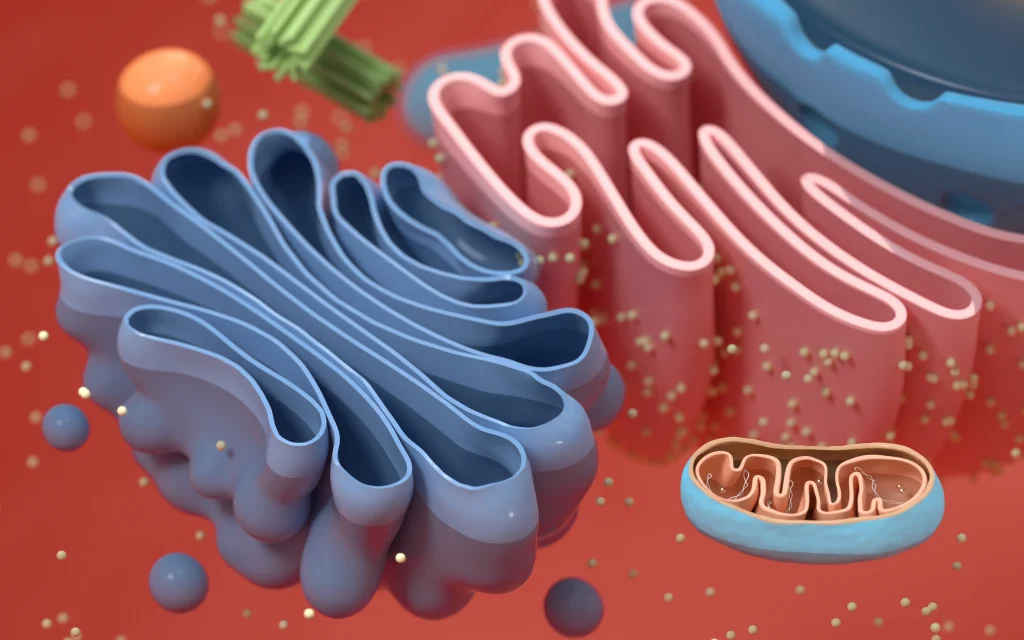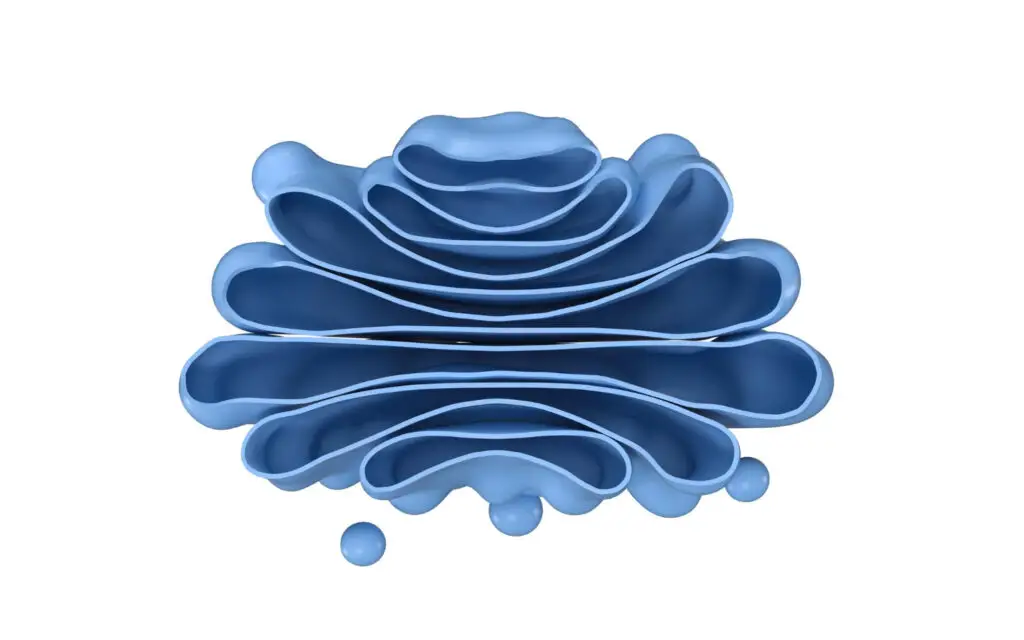Discovery:
Italian cytologist Camillo Golgi was the first to observe the Golgi apparatus, which now bears his name, in 1897. Golgi used a staining technique on nervous tissue called the “internal reticular apparatus.”

Location:
In plants, these are dispersed, while in animal cells, these are present at the periphery.
Explanation:
The Golgi apparatus is also called the “manufacturing and shipping center” of a eukaryotic cell.
The Golgi apparatus, sometimes called the Golgi complex or or Dictyoses, or Lipo chomdrian and is responsible for manufacturing, warehousing, and shipping certain cellular products, particularly those from the endoplasmic reticulum (ER).
A Golgi apparatus is composed of flat sac-like structures known as cisternae. The sacs are stacked in a bent, semicircular shape. Each stacked grouping has a membrane that separates its insides from the cell’s cytoplasm.
The Golgi bodies are very polar. Stacks may change in number in each cell i.e. 16, 18, and 20. Fungi have uni cisternae Golgi body, while chara has hundreds of Cisternae. Secretory cells have a large number of Golgi Bodies as compared to non-secretory cells.
Golgi Bodies are polymorphic because they can change their shape account to their function.
Membranes at one end of the stack differ in composition and thickness from those at the other.
One end (cis face) acts as the “receiving” department and is called the formative face as it receives vesicles from Endoplasmic Reticulum.

The cis face is closely associated with the ER. The other (Trans face) acts as the “shipping” department and is called the maturation face, sending mature vesicles to the cell organelles or out of the cell through the cell membrane.
The Golgi body acts like a postman, sending material from one part of the cell to another.
Zone of Exclusion:
The area where nothing is present around the Golgi Bodies is called the zone of Exclusion.
Working with Endoplasmic Reticulum
The Golgi complex works closely with the rough ER. When a protein is made in the ER, a transition vesicle is made. This vesicle or sac floats through the cytoplasm to the Golgi apparatus and is absorbed.
After the Golgi works on the molecules inside the sac, a secretory vesicle is created and released into the cytoplasm. From there, the vesicle moves to the cell membrane, releasing the molecules.
Functions of Golgi bodies
- It receives protein or other materials as vesicles from the endoplasmic reticulum, then modifies, stores, packages, and sends to the target point.
- It helps to form enzymes, e.g., Digestive enzymes in the pancreatic duct.
- It produces hormones.
- It stores Proteins and lipids.
- Formation of Acrosome (Digestive enzyme in the head of sperm to break the egg membrane to fertilize it.
- Formation of milk protein droplets in memory glands of mice.
- Help in the formation of the plant cell walls (pectin, Hemicellulose, etc)
- Formation of cell plate during mitotic cell division.
Key Points:
- Italian cytologist Camillo Golgi discovered the Golgi apparatus in 1897 using a staining technique.
- The Golgi apparatus is also known as the “manufacturing and shipping center” of a eukaryotic cell.
- It is responsible for manufacturing, warehousing, and shipping cellular products, especially those from the endoplasmic reticulum (ER).
- The Golgi apparatus is dispersed in plants while at the periphery of animal cells.
- The Golgi apparatus consists of stacked sac-like structures called cisternae, which can change their shape according to their function.
- The Golgi apparatus has a receiving end (cis face) and a shipping end (trans face), which receives vesicles from the ER and sends mature vesicles to other cell organelles or out of the cell.
- The zone around the Golgi Bodies where nothing is present is called the zone of exclusion.
- The Golgi complex closely interacts with the rough endoplasmic reticulum (ER) in protein processing and transport.
- Golgi bodies receive vesicles from the ER, modify, store, package, and send them to the target destination.
- Other functions of Golgi bodies include the formation of enzymes, hormone production, protein, and lipid storage, and involvement in various cellular processes such as acrosome formation, plant cell wall formation, and cell division.
FAQs about the Golgi apparatus
How is the Golgi apparatus formed?
A Golgi stack comprises five to eight closely aligned flattened cisternae organized into three distinct modules. Firstly, the cis-Golgi network resides near the endoplasmic reticulum (ER) and receives its output. Secondly, the stacked cis-, medial-, and trans-Golgi cisternae house glycosylation enzymes and facilitate the processing cargo proteins and lipids. Lastly, the trans-Golgi network (TGN) faces the plasma membrane and is responsible for sorting cargo molecules, ensuring their delivery to various destinations.
Where is the Golgi apparatus located?
The Golgi apparatus is a series of stacked membranes located within the cytoplasm.
Who discovered the Golgi apparatus?
Golgi apparatus or Golgi complex, simply known as ‘the Golgi”, was first reported by Camillo Golgi in 1898.
